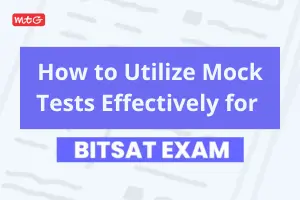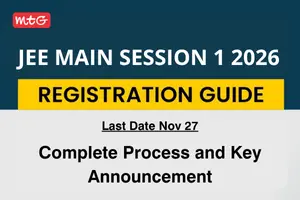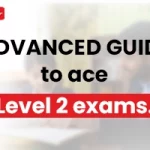
Vellore Institute of Technology Engineering Entrance Exam (VITEEE) is one of the most renowned engineering entrance exams in India. Conducted by Vellore Institute of Technology (VIT), the entrance exam ensures entry to the undergraduate engineering courses of the affiliated colleges of VIT such as B.Tech and B.E. For fruitful preparation, candidates must strive hard to understand the syllabus thoroughly. Let’s have a look at the VITEEE syllabus:
VITEEE Syllabus Overview
The VITEEE syllabus is primarily based on the NCERT curriculum of classes 11 and 12. It covers subjects such as Physics, Chemistry, Mathematics, Aptitude and English. Below is a breakdown of each subject:
1. Physics
- Class 11 Topics:
- Physical World and Measurement
- Kinematics
- Laws of Motion
- Work, Energy, and Power
- Motion of System of Particles and Rigid Body
- Gravitation
- Properties of Bulk Matter
- Thermodynamics
- Behavior of Perfect Gas and Kinetic Theory
- Oscillations and Waves
- Class 12 Topics:
- Electrostatics
- Current Electricity
- Magnetic Effects of Current and Magnetism
- Electromagnetic Induction and Alternating Currents
- Electromagnetic Waves
- Optics
- Dual Nature of Matter and Radiation
- Atoms and Nuclei
- Electronic Devices
2. Chemistry
- Class 11 Topics:
- Some Basic Concepts of Chemistry
- Structure of Atom
- Classification of Elements and Periodicity in Properties
- Chemical Bonding and Molecular Structure
- States of Matter: Gases and Liquids
- Thermodynamics
- Equilibrium
- Redox Reactions
- Hydrogen
- s-Block Element (Alkali and Alkaline earth metals)
- Some p-Block Elements
- Organic Chemistry – Some Basic Principles and Techniques
- Hydrocarbons
- Environmental Chemistry
- Class 12 Topics:
- Solid State
- Solutions
- Electrochemistry
- Chemical Kinetics
- Surface Chemistry
- General Principles and Processes of Isolation of Elements
- p-Block Elements
- d and f Block Elements
- Coordination Compounds
- Haloalkanes and Haloarenes
- Alcohols, Phenols, and Ethers
- Aldehydes, Ketones and Carboxylic Acids
- Organic Compounds Containing Nitrogen
- Biomolecules
- Polymers
- Chemistry in Everyday Life
3. Mathematics
- Class 11 Topics:
- Sets and Functions
- Trigonometric Functions
- Complex Numbers and Quadratic Equations
- Linear Inequalities
- Permutations and Combinations
- Binomial Theorem
- Sequence and Series
- Straight Lines
- Conic Sections
- Introduction to Three-Dimensional Geometry
- Limits and Derivatives
- Mathematical Reasoning
- Statistics and Probability
- Mathematical Induction
- Class 12 Topics:
- Relations and Functions
- Inverse Trigonometric Functions
- Matrices and Determinants
- Continuity and Differentiability
- Application of Derivatives
- Integrals
- Differential Equations
- Vector Algebra
- Three-Dimensional Geometry
- Linear Programming
- Probability
4. English
The English section assesses the candidates’ proficiency in the language, including comprehension, grammar, and vocabulary. It may include:
- Reading Comprehension
- Grammar
- Vocabulary
- Sentence Correction
- Synonyms and Antonyms
5. Aptitude
The Aptitude section assesses the candidates’ proficiency in data handling and reasoning. It may include:
- Data Interpretation
- Data Sufficiency
- Syllogism
- Number Series, Coding and Decoding
- Clocks, Calendars, and Directions
| Physics | Chemistry | Mathematics | English | Aptitude | |||
| Class 11 | Class 12 | Class 11 | Class 12 | Class 11 | Class 12 | Reading Comprehension | Data Interpretation |
| Physical World and Measurement | Electrostatics | Some Basic Concepts of Chemistry | Solid State | Sets and Functions | Relations and Functions | Grammar | Data Sufficiency |
| Kinematics | Current Electricity | Structure of Atom | Solutions | Trigonometric Functions | Inverse Trigonometric Functions | Vocabulary | Syllogism |
| Laws of Motion | Magnetic Effects of Current and Magnetism | Classification of Elements and Periodicity in Properties | Electrochemistry | Complex Numbers and Quadratic Equations | Matrices and Determinants | Sentence Correction | Number Series, Coding and Decoding |
| Work, Energy, and Power | Electromagnetic Induction and Alternating Currents | Chemical Bonding and Molecular Structure | Chemical Kinetics | Linear Inequalities | Continuity and Differentiability | Synonyms and Antonyms | Clocks, Calendars, and Directions |
| Motion of System of Particles and Rigid Body | Electromagnetic Waves | States of Matter: Gases and Liquids | Surface Chemistry | Permutations and Combinations | Application of Derivatives | ||
| Gravitation | Optics | Thermodynamics | General Principles and Processes of Isolation of Elements | Binomial Theorem | Integrals | ||
| Properties of Bulk Matter | Dual Nature of Matter and Radiation | Equilibrium | p-Block Elements | Sequence and Series | Differential Equations | ||
| Thermodynamics | Atoms and Nuclei | Redox Reactions | d and f Block Elements | Straight Lines | Vector Algebra | ||
| Behavior of Perfect Gas and Kinetic Theory | Electronic Devices | Hydrogen | Coordination Compounds | Conic Sections | Three-Dimensional Geometry | ||
| Oscillations and Waves | s-Block Element (Alkali and Alkaline earth metals) | Haloalkanes and Haloarenes | Introduction to Three-Dimensional Geometry | Linear Programming | |||
| Some p-Block Elements | Alcohols, Phenols, and Ethers | Limits and Derivatives | Probability | ||||
| Organic Chemistry – Some Basic Principles and Techniques | Aldehydes, Ketones and Carboxylic Acids | Mathematical Reasoning | |||||
| Hydrocarbons | Organic Compounds Containing Nitrogen | Statistics and Probability | |||||
| Environmental Chemistry | Biomolecules | Mathematical Induction | |||||
| Polymers | |||||||
| Chemistry in Everyday Life | |||||||
Preparation Tips for VITEEE
- Understand the Exam Pattern:Familiarize yourself with the exam format, including the number of questions and marking scheme.
- Chalk out a Study Schedule:Assign specific time for each subject on the basis of your forte and weaknesses.
- Practice Regularly:In order to work on your speed and accuracy, solve previous years’ question papers and appear for mock tests. Refer to MTG’s VITEEE Chapterwise Solutions having 14 previous years solved papers with detailed solutions. The book follows a chapterwise format for students’ convenience. It also comes with 5 VITEEE model test papers so that the students can practice based on the latest VITEEE exam pattern.
- Focus on Concepts:Ensure a strong grasp of fundamental concepts, as VITEEE tests conceptual understanding.
- Stay Updated:Keep an eye on any changes in the syllabus or exam pattern announced by VIT.
Check more tips here – VITEEE Preparation Tips: Your Guide to Guaranteed Success in VITEEE 2025
Conclusion
The VITEEE syllabus is comprehensive and requires dedicated preparation. By understanding the topics covered and following a structured study plan, candidates can enhance their chances of success in the examination. Good luck!






























